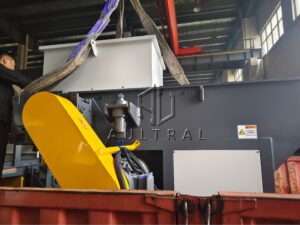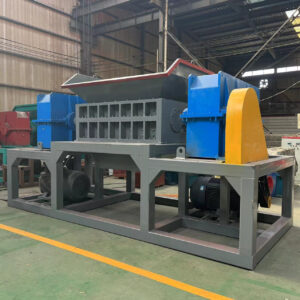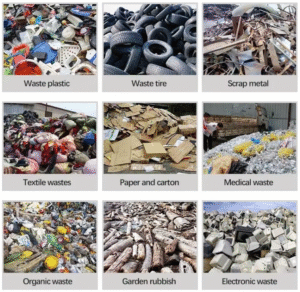In the modern recycling industry, shredders play a vital role in reducing the volume of waste materials and preparing them for further processing. Among the most common types are single shaft shredders and dual shaft shredders, each designed for specific tasks and materials. Understanding their differences and use cases can help businesses choose the most suitable solution for their waste management needs.
🔧 Functions of Single Shaft & Dual Shaft Shredders
Single Shaft Shredder:
A single shaft shredder consists of one rotating shaft with mounted blades and a hydraulic pusher. It is mainly used for precision shredding and size reduction. The hydraulic system pushes the material toward the rotor, allowing uniform and efficient shredding.
-
Ideal for controlled output sizes
-
Often includes a screen to determine particle size
-
Efficient for plastic, wood, textiles, and light metals

Dual Shaft Shredder:
A dual shaft shredder (also known as a twin shaft shredder) features two interlocking shafts with cutting blades that rotate at low speed and high torque. These machines are designed for coarse shredding and volume reduction.
-
Excellent for breaking down bulky or tough materials
-
No screen—output size depends on blade spacing
-
Handles mixed, contaminated, or unstructured waste easily

⚙️ Key Differences Between Single Shaft and Dual Shaft Shredders
| Feature | Single Shaft Shredder | Dual Shaft Shredder |
|---|---|---|
| Rotor System | One shaft + hydraulic pusher | Two counter-rotating shafts |
| Output Size Control | Controlled via screen | Coarse; controlled by cutter design |
| Speed & Torque | Higher speed, lower torque | Lower speed, higher torque |
| Maintenance | Moderate; requires screen checks | Lower; no screen, but blades may wear faster |
| Typical Use | Uniform shredding and reprocessing | Rough shredding of hard, bulky waste |
| Best For | Plastics, films, wood, fiber materials | Tires, metal drums, e-waste, municipal solid waste |
🏭 Application Scenarios
Single Shaft Shredder Applications:
-
Recycling plastic parts (e.g., PET, PP, PVC)
-
Shredding textile, leather, and foam
-
Size reduction of wood pallets and furniture
-
Preparing materials for granulation or extrusion
Dual Shaft Shredder Applications:
-
Car tire shredding and rubber recycling
-
Metal scrap and aluminum waste
-
Electronic waste (WEEE) processing
-
Mixed municipal or industrial solid waste
-
Large drums, barrels, and bulky plastic items

💡 Choosing the Right Shredder
If your goal is precise size reduction and clean, consistent output for downstream processing, a single-shaft shredder is often the best fit. However, if you need to break down bulky, rigid, or mixed materials, especially in the pre-shredding stage, a dual shaft shredder offers the torque and resilience required.
🌍 Conclusion
Both single shaft and dual shaft shredders are essential tools in the recycling ecosystem. By understanding their functions, differences, and ideal application areas, manufacturers, recyclers, and waste handlers can make informed decisions that improve efficiency, reduce waste, and support a sustainable future.
If you’re considering investing in shredding equipment, contact us today—we offer customized solutions tailored to your specific material and processing needs.
